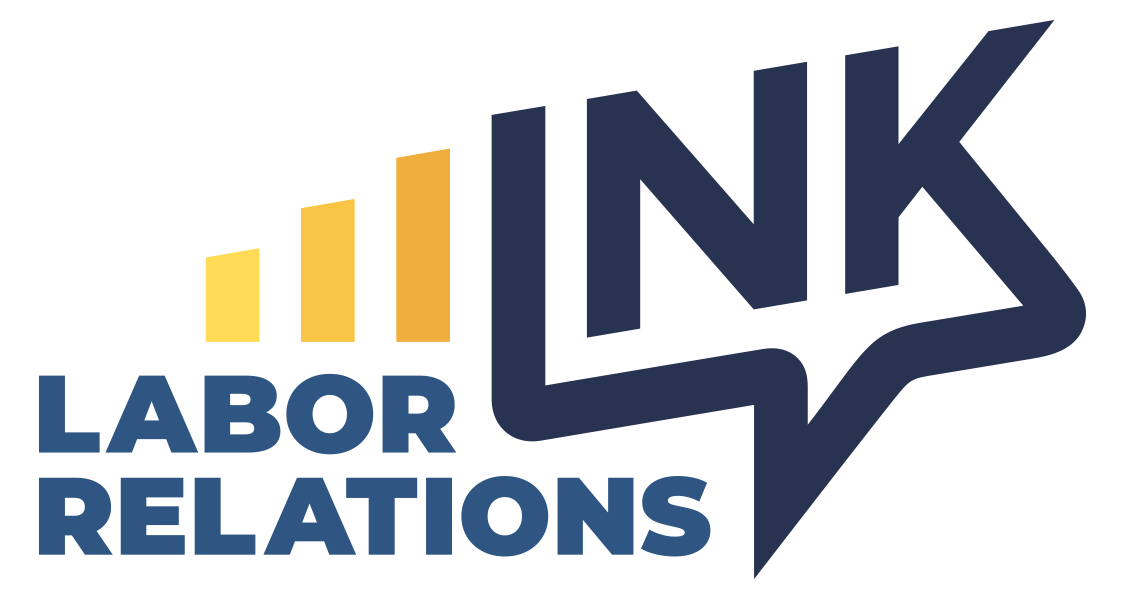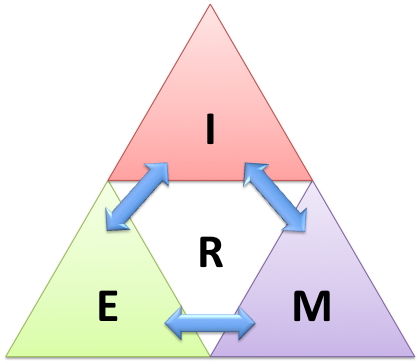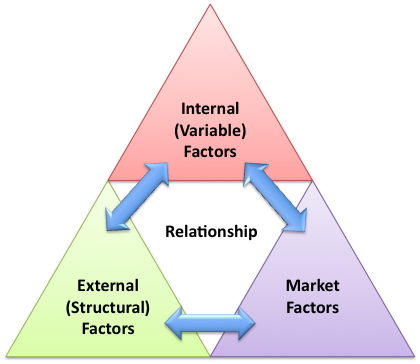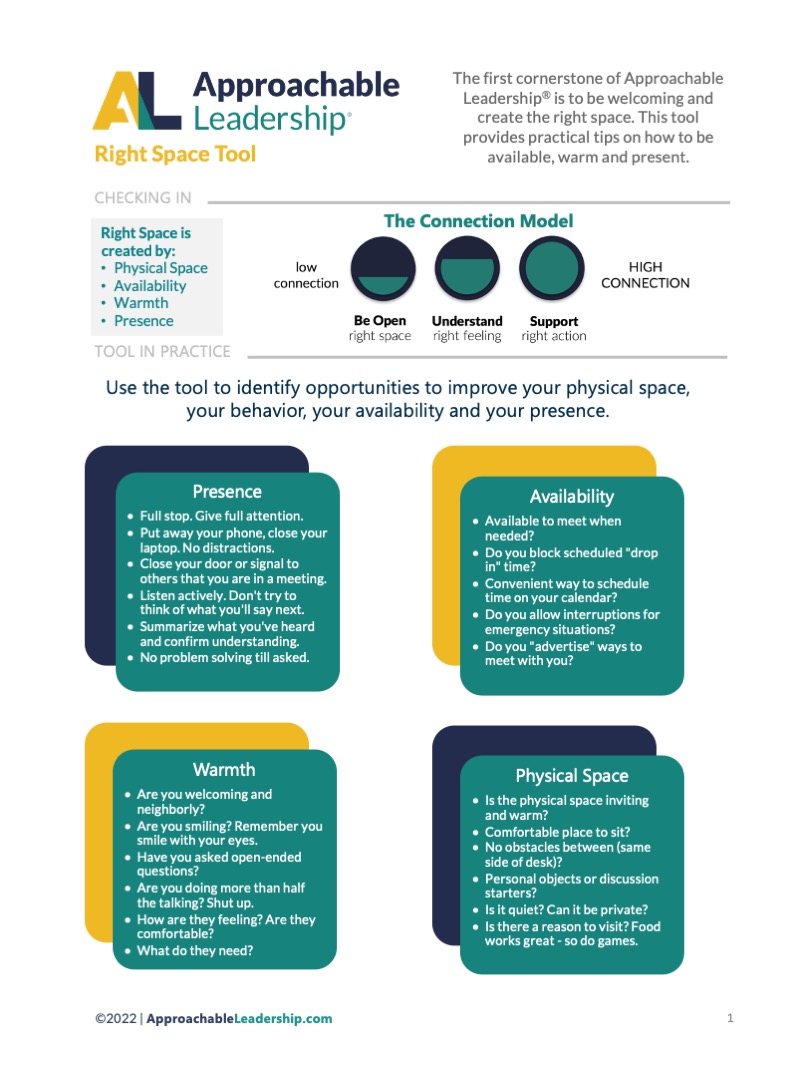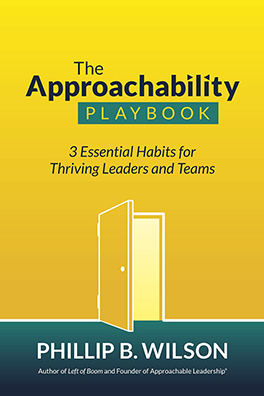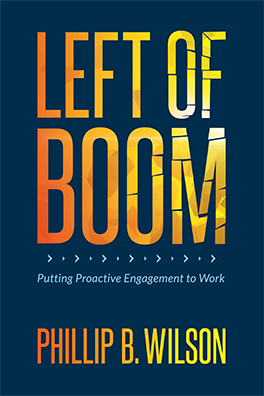I haven’t changed my email signature in years. It is a quote from an economist, Ernst Schumacher. He says: “Any intelligent fool can make things bigger, more complex and more violent. It takes a touch of genius – and a lot of courage – to move in the opposite direction.” I love that quote. Now if you know me you already know that I’m not touched with genius (heck, I’m not even that intelligent of a fool…), but I am a big fan of simple. Simple works. With that in mind I’d like to share a simple diagram with you that captures the essence of how to create a positive workplace:
This simple diagram is very powerful. It explains just about everything that we work on with a client when helping them create a positive workplace. It helps you figure out what to work on next, what you can safely ignore, and how to think about (and avoid) the unintended consequences of your actions. Here’s what the letters stand for. The “I” stands for Internal (or what we sometimes call “variable”) factors that impact the employee relations environment. The “E” stands for External (or what we sometimes call “structural”) factors that impact that environment. The “M” stands for Market factors. Finally the “R” stands for your Relationship with employees. Here are two more versions of the diagram that show you these details and the types of things you might find in each triangle.
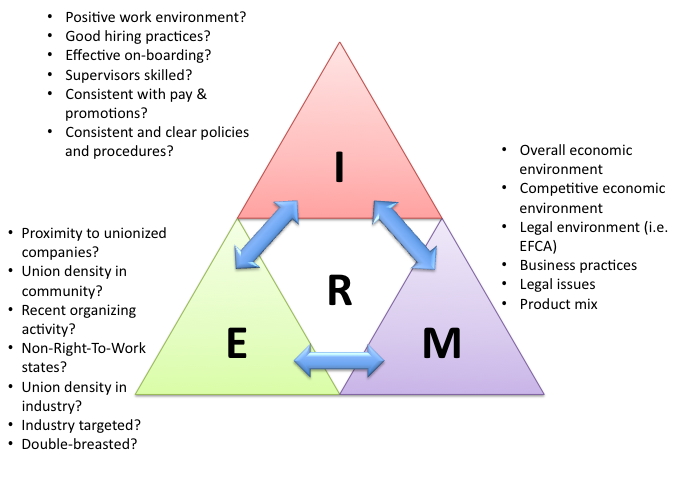 Here is the main point of the Leverage Triangle. Your relationship with employees is where all of your leverage resides when it comes to things like employee satisfaction, engagement and even vulnerability to union organizing. There three main areas where you can impact this relationship are represented by the colored triangles.
Here is the main point of the Leverage Triangle. Your relationship with employees is where all of your leverage resides when it comes to things like employee satisfaction, engagement and even vulnerability to union organizing. There three main areas where you can impact this relationship are represented by the colored triangles.
The small arrows that connect the triangles represent the idea that these internal, external and market factors impact each other. For example, let’s say that you are the biggest non-union company in a heavily unionized industry (an External factor). Demand for your company’s products has declined dramatically during the recession (a Market factor). Your company decides that it must lay off 10% of the workforce – its first layoff in history. Since there is no policy in place you decide to draft a new policy that covers how to do the layoff (and Internal factor). How this change gets implemented and communicated will have a major impact on your organization’s relationship with employees – that impact can be either negative or positive (and yes, it is possible to leave a layoff with a stronger relationship with employees). You will want to account for your External factors when you plan and deliver communication. Your employees will want reassurance that the company has a plan to get back to full strength (an appreciation of the Market factors). They will look at how the decision was made and how both the laid off and remaining employees were treated (Internal factors). There are many other implications of the Leverage Triangle that we’ll explore in future articles. If you haven’t read our white paper on vulnerability assessment, I encourage you to take a look at that for additional information about how all these factors interrelate and impact your company’s vulnerability to union organizing activity.
